Poster Session
This material is based upon work supported by the National Science Foundation under Grant No. IIA-1301726.
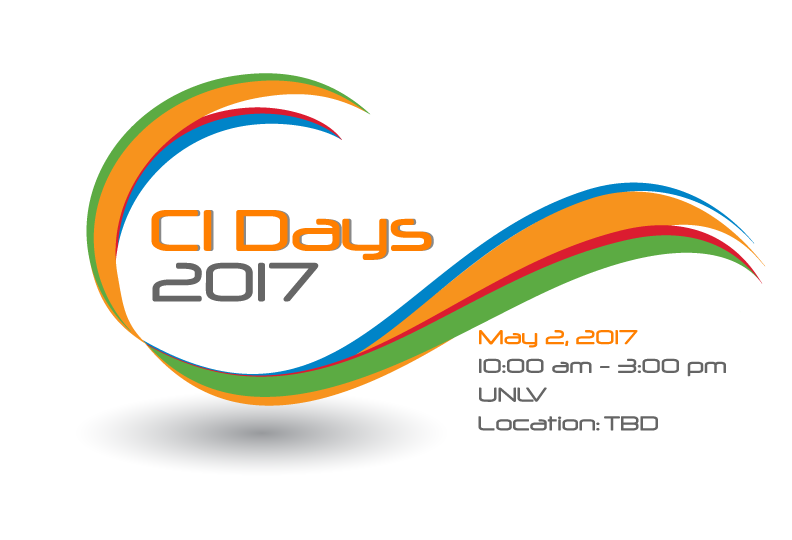

A Non-Traditional Method to Navigate Through a 3D Virtual Environment
Authors – Angela Chang, University of Nevada, Reno
Read Abstract
In this poster, we propose a navigation software system which utilizes assistive technologies, with a strong focus on Brain-Computer Interfacing (BCI). Assistive technologies (ATs) have become recent subjects of interest due to the yearly increasing prevalence rates in impairments. We developed Sim-Guide to allow users to navigate through and interact with Google Street View’s three-dimensional view of any location in a hands-free manner. Although our system focuses more towards people with motor impairments, people without impairments may also use Sim-Guide for an enhanced user experience. Our future results will provide insight into how we will incorporate its concepts into other three-dimensional environments such as the Virtual Watershed Platform.

Improving the Classifier Performance in Detecting People Based on Denoising Wavelet Transform
Authors – Lina Chato and Shahram Latifi; University of Nevada, Las Vegas
Read Abstract
This paper presents the effects of the noise on the performance of the classifier in detecting people using Infrared (IR) camera, and then improve its performance by using denoising wavelet transformer techniques. The local binary pattern (LBP) detector is used in detecting person in IR images. The LBP features are extracted to train the classifier using a support vector machine (SVM). Experimentally, we find the classifier performs very poorly with a noisy image. Three wavelet functions (Harr, db2, and db4) are used in denoising process with different levels in an effort to find an efficient denoising method. Three type of noise models are added to the original test data set and three metrics namely- True positive Rate (TPR), False Negative per Frame (FNPF) and False Positive Per Frame (FPPF) are used to evaluate the performance of the classifier in detection process. The results show that denoising using db2 and db4 wavelet transforms with level 4 improve the classification results by removing successfully the three types of noise preserving the texture features of the original image which are used by the LBP detector.
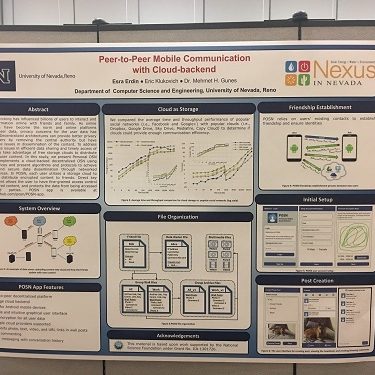
POSN: A Privacy Preserving Decentralized Social Network App for Mobile Devices
Authors – Esra Erdin, Eric Klukovich, and Mehmet H. Gunes; University of Nevada, Reno
Read Abstract
Social networking has influenced billions of users to interact and share information online with friends and family. As online interactions have become the norm and online platforms amassed user data, privacy concerns for the user data has increased. Decentralized architectures can provide better privacy to the users by removing the central authority but have performance issues in dissemination of the content. To address performance issues in efficient data sharing and timely access of objects, we take advantage of free storage clouds to distribute encrypted user content. In this study, we present Personal OSN app that implements a cloud-backed decentralized OSN using mobile devices and present algorithms and protocols to achieve efficient and secure data dissemination through networked mobile devices. In POSN, each user utilizes a storage cloud to store and distribute encrypted content to friends. Direct key management allows the user to have fine-grained access control of the shared content, and protects the data from being accessed by third parties. POSN app is available at https://github.com/posn/POSN-app.
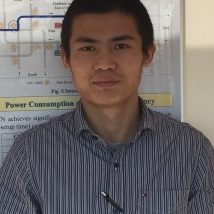
Snow Detection Using Machine Learning Method on Southern Nevada Research Cloud
Authors – Zhao Fu, Mei Yang, and Yingtao Jiang; University of Nevada, Las Vegas
Read Abstract
To meet the higher requirements of large datasets processing, storage, and security in Nexus research, our group has developed a scalable cloud computing platform, namely Southern Nevada Research Cloud (SNRC). On SNRC, the state-of-the-art research software, including OpenStack, Spark, Hadoop, Jupyter Notebook, Python, Octave and R, have been deployed. In this poster, a snow detection demo based on the data from Nevada Research Data Center will be presented to demonstrate the data processing capability and high performance of SNRC. The images of the same location taken at different time points will be processed using the machine learning tools available in SNRC. A two-layer neural network model will be developed which can process several hundreds of images in only two minutes. This neural network model can be expanded to solve other similar problems.
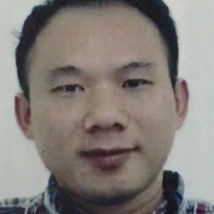
Improving Subpixel Target Detection Using Hybrid Detection Space
Authors – Ruixing Li and Shahram Latifi; University of Nevada, Las Vegas
Read Abstract
We describe a hybrid method for subpixel target detection using hyperspectral imaging. Hyperspectral images have high spectral resolution and low spatial resolution. Therefore, most targets exist as subpixel in the image, and this would place challenges in target detection. We use the scores of CEM and ACE algorithm to construct a hybrid detection space. First, one random reference target spectral is extracted from the scene to perform first time detection to determine the target and background subspaces. Then a new reference target spectral is extracted from the target subspace to perform a second time detection in order to minimize the effects of target spectral variation. Furthermore, target free background covariance matrix is estimated by the background subspace and then the subpixel distribution in the detection space is evaluated to improve the detection performance. Two synthetic datasets and one real dataset is used in the experiment. The results are evaluated based on the mean detection rate of ROC curve. Compared to the individual CEM and ACE algorithms, the new method is shown to have better performance on all three datasets. This method can be applied in remote water resource detection and contamination detection to search for extreme small target distribution in a large scene, and therefore, it is aligned with the general objective of the NEXUS project.


NRDC Quality Control Application
Authors – Hannah Munoz, Vinh Le, Connor Scully-Allison, Eric Fritzinger, and Scotty Strachan; University of Nevada, Reno
Read Abstract
The Nevada Research Data Center (NRDC) QC App is a single page web application provides technicians and researchers with an interface to visualize, examine and quality control data streams from remote NRDC research sites. This application offers technicians a streamlined interface and customization dashboard for quick access to the sites and data most urgently in need of review. This proposed application also includes a background “flagging” service which automatically flags incoming data points as erroneous when they fall out of technician specified bounds of validity. The automatic flagging service also notifies interested parties when this flagging process occurs via email, enabling quick reactive action from the QC technicians. This application furnishes NRDC data stewards with a dynamic toolkit to ensure that more robust and meaningful data sets are reliably conveyed to the researchers and institutions working with them.
NRDC Cross-Platform QA Application
Authors – Hannah Munoz, Vinh Le, Connor Scully-Allison, Eric Fritzinger, and Scotty Strachan; University of Nevada, Reno
Read Abstract
The Nevada Research Data Center (NRDC) QC App is a single page web application provides technicians and researchers with an interface to visualize, examine and quality control data streams from remote NRDC research sites. This application offers technicians a streamlined interface and customization dashboard for quick access to the sites and data most urgently in need of review. This proposed application also includes a background “flagging” service which automatically flags incoming data points as erroneous when they fall out of technician specified bounds of validity. The automatic flagging service also notifies interested parties when this flagging process occurs via email, enabling quick reactive action from the QC technicians. This application furnishes NRDC data stewards with a dynamic toolkit to ensure that more robust and meaningful data sets are reliably conveyed to the researchers and institutions working with them.

Weather Prediction Using Deep Learning: A Parallel Implementation
Authors – Neha Raste and Shahram Latifi; University of Nevada, Las Vegas
Read Abstract
A method for prediction of temperature as well as classifying the weather based ‘what the weather feels like’ is proposed, using Deep Learning (DL) approach. Deep learning is learning of complex features iteratively to obtain generalized ‘intuition’ of the data pattern. The prediction is based on autoregressive signal processing for batch-wise time series data; followed by a fully connected Multi-Layer Perceptron (MLP). The data was collated on hourly basis for the time period of January 2014 to December 2015. The aim of this project is to compare this DL algorithm for 3 different implementations: serial implementation on CPU, data parallel (batch-wise) implementation on CPU and model parallel approach using cuDNN library on GPU. The model parallelism approach was found to be the most efficient and fastest time wise.
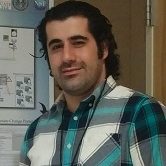
A Survey on IoT Communication and Computation Frameworks
Authors – Shahab Tayeb and Shahram Latifi; University of Nevada, Las Vegas
Read Abstract
This poster surveys fog computing and embedded systems platforms as the building blocks of Internet of Things (IoT). Many concepts around IoT architectures, with various examples, are also discussed. This paper reviews a high-level conceptual layered architecture for IoT from a computational perspective. The architecture incorporates fog computing to address several issues associated with cloud computing; however, it is never a binary decision between fog and cloud. Many of the world’s physical objects are being embedded with sensors and actuators, tied by communication infrastructures, and managed by computational algorithms. IoT sensor networks and embedded systems connecting smart objects are revolutionizing how we approach our daily lives, health care, energy, and transportation. Such computational needs are addressed with an array of various models and frameworks. In an attempt to consolidate the use of these models, this paper reviews the state-of-the-art research in IoT, cloud computing, and fog computing.




